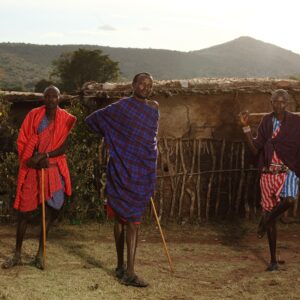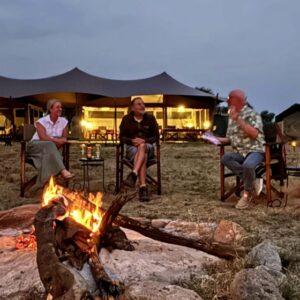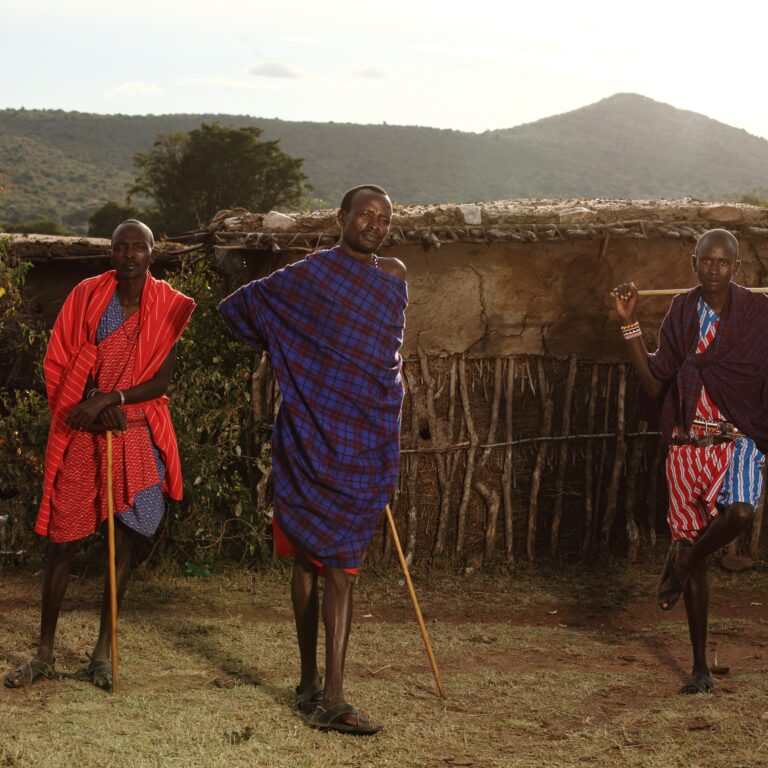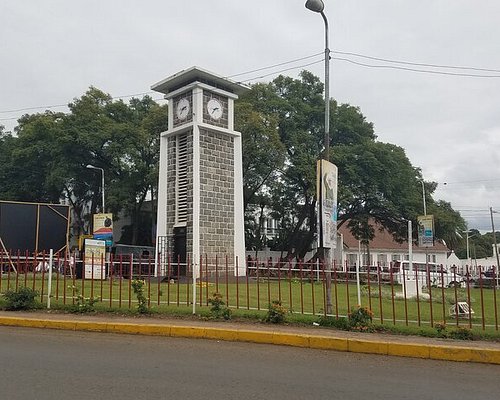The African safari. It’s a quintessential bucket-list adventure, and for many, the ultimate prize is a sighting of the continent’s magnificent big cats: the formidable lion, the elusive leopard, and the lightning-fast cheetah. These apex predators embody the wild heart of Africa, and witnessing them in their natural habitat is an experience that stays with you forever. Spotted big cats always require a dash of luck and the expertise of a good guide. Certain national parks and reserves offer significantly higher chances of unforgettable encounters. Let’s delve into the premier destinations where you can maximize your opportunities to see Africa’s most iconic felines. Lions, the undisputed kings of the African savannah, are perhaps the most sought-after of the big cats. Known for their social prides, powerful roars, and often lazy daytime habits, they are a captivating sight.
1. Serengeti National Park, Tanzania: A Lion Stronghold
The Serengeti synonymous with the Great Migration, but it’s equally where to spot African big cat on Safaris renowned as a lion stronghold. This vast ecosystem, particularly the central Seronera Valley, boasts one of the highest densities of lions in Africa. Why the Serengeti ideal? The sheer abundance of prey animals (wildebeest, zebra, gazelles) supports a thriving lion population. The open plains make it easier to spot prides resting under acacia trees or stalking their next meal. The famous “kopjes” (rocky outcrops) also serve as excellent vantage points for lions, often providing incredible photographic opportunities. Check this. Complete Guide for Travelers to Visit Serengeti National Park.
Best time to visit. While lions are present year-round, the dry season (June to October) offers optimal viewing. The sparse vegetation makes it easier to spot them, and they tend to congregate around dwindling water sources, as do their prey. The Great Migration (typically July-October) is a spectacular time to witness lions in action as they follow the herds. What to expect. You’ll likely see large prides, often with cubs, resting during the heat of the day. Early morning or late afternoon game drives increase your chances of witnessing hunting behavior. Guides are highly skilled at tracking and predicting lion movements. Check this: Best Places to See Cheetahs in Africa
2. Ngorongoro Crater, Tanzania: A Crater Full of Cats
Often referred to as the “Garden of Eden” or the “eighth wonder of the world,” where to spot African big cat on Safaris. The Ngorongoro Crater is a self-contained ecosystem teeming with wildlife, including a remarkably dense population of lions. Why Ngorongoro is ideal. The crater floor’s relatively small size (260 sq km) means that animals are concentrated, making sightings frequent and often close-up. The lush grasslands and permanent water sources support abundant prey, allowing lions to thrive. The crater boasts one of the highest densities of lions worldwide.
Best time to visit. Game viewing is excellent year-round due to the resident population. The dry season (June to October) can make spotting easier as vegetation thins. The calving season (January-March) sees an influx of vulnerable young prey, making for active predator sightings. What to expect. Expect to see numerous lion prides, often very relaxed due to regular vehicle presence. They are frequently seen lounging in the grass, near waterholes, or even on the main roads. While cheetah numbers are lower, you might spot them in the open plains, and several cats are relatively common. Check this. 12 Most Amazing Ngorongoro Crater Animals to Spot.
3. Maasai Mara National Reserve, Kenya: Big Cat Diary Territory
Adjacent to the Serengeti, the Maasai Mara is world-famous for where to spot African big cats on Safaris and other incredible wildlife. Including its exceptionally large and well-documented lion prides (many of which were featured in the BBC’s “Big Cat Diary”). Why the Maasai Mara ideal? The vast open plains and rich savanna support massive herbivore populations, in turn attracting a high concentration of predators. The Mara’s lions are known for their impressive size and the dramatic interactions within their prides.
Best time to visit. The absolute peak for lion viewing, particularly hunting, is during the Great Migration (July to October), when millions of wildebeest and zebra flood into the reserve. However, the Mara offers excellent lion sightings year-round. What to expect. You’ll likely encounter multiple prides, some very habituated to vehicles, allowing for fantastic photographic opportunities. The Mara River crossings during the migration offer truly dramatic scenes of lions ambushing prey.
4. South Luangwa National Park, Zambia: The Valley of the Leopard
South Luangwa is widely hailed as “the Valley of the Leopard” for a very good reason. It boasts one of the highest densities of leopards in Africa, making it arguably the best place on the continent to see these magnificent creatures. Why South Luangwa ideal? The park’s diverse riverine forests and thickets provide perfect camouflage and hunting grounds for leopards. Crucially, night drives are permitted here, significantly increasing your chances of spotting these nocturnal hunters.
Best time to visit. The dry season (May to October) is prime. As the Luangwa River recedes, animals congregate around remaining water sources, and the thinning vegetation makes leopards easier to spot, especially resting in trees. What to expect. With skilled guides and dedicated night drives, your chances of a leopard sighting are incredibly high. You might see them lounging in the branches of a sausage tree, stalking prey at night, or even carrying a kill up into a tree to keep it from hyenas and lions.
5. Sabi Sand Game Reserve (Kruger National Park), South Africa: Legendary Leopard Sightings
While part of the greater Kruger ecosystem, Sabi Sand is a collection of private reserves renowned globally where to spot African big cat on Safaris for its unparalleled leopard sightings. Why Sabi Sand ideal? The leopards here are remarkably habituated to vehicles, allowing for incredibly close and intimate encounters. The reserve’s strict vehicle limits and off-roading policies mean guides can follow animals into the bush for optimal viewing, which is often not permitted in public national parks.
Best time to visit. Good year-round, but the dry winter months (May to October) offer the best visibility as the bush thins out. What to expect. Sabi Sand often delivers multiple leopard sightings during a stay, sometimes even within a day. You might see them hunting, resting in trees, or interacting with their cubs. This is arguably the best place in Africa to get stunning photographs of leopards.
6. Ruaha National Park, Tanzania: Southern Tanzania’s Hidden Gem
Tanzania’s largest national park, Ruaha, in the country’s south, is a truly wild and remote destination. While less visited than the northern circuit parks, it offers exceptional big cat viewing, particularly for leopards. Why Ruaha ideal? Its vast, unspoiled wilderness, characterized by massive baobab trees and the Great Ruaha River, provides excellent habitat for leopards. The lower tourist numbers mean a more exclusive and undisturbed safari experience.
Best time to visit. The dry season (June to October) is best for leopard sightings, as they become more reliant on the river for water and are easier to spot against the sparse vegetation. What to expect. While perhaps not as guaranteed as Sabi Sand or South Luangwa, Ruaha offers consistent leopard sightings for those who spend a few days exploring its diverse landscapes. The experience feels more authentic and less crowded.
7. Tarangire National Park, Tanzania: Elephants and Tree-Climbing Lions
Tarangire is famous for its enormous elephant herds and iconic baobab trees, but it also hosts a good population of lions and leopards, and some cheetahs. While the previous destinations are stellar for guaranteed sightings, these parks also hold healthy populations of big cats, often offering different safari experiences. Why Tarangire is ideal: While not as dense as the Serengeti for lions, Tarangire’s tree-climbing lions (a behavior more commonly associated with Lake Manyara) are a unique draw. The Tarangire River acts as a magnet for wildlife during the dry season, concentrating predators and prey.
Best time to visit. Dry season (June to October) for all cat sightings. What to expect. Lion sightings are common, especially near the river or in the acacia woodlands. Leopards are present but elusive. Cheetahs are found in the more open southern sections of the park.
8. Lake Manyara National Park, Tanzania: The Famous Tree-Climbing Lions
Lake Manyara is a relatively small park, but it gained fame for its unique population of tree-climbing lions. Why Lake Manyara ideal? This is one of the few places in Africa where lions regularly climb and lounge in trees, particularly acacia and sausage trees. While the reasons are debated (tsetse flies, escaping heat, better vantage point), it’s a fascinating behavior to observe. Best time to visit: Year-round, but the dry season (June to October) may offer slightly easier sightings as foliage thins. What to expect. Focus your efforts on finding the tree-climbing lions. Leopards are also found here but are harder to spot, and cheetahs are rare.
9. Kruger National Park, South Africa: A Big Cat Bonanza (Beyond Sabi Sand)
Kruger is South Africa’s flagship park and a true wilderness icon. While Sabi Sand offers the premium leopard experience, the public areas of Kruger itself are exceptional for all big cats. Why Kruger ideal? Its immense size and diverse habitats support thriving populations of lions, leopards, and cheetahs. The park’s well-maintained road network makes it accessible for self-drivers and guided safaris. Best time to visit. Dry season (May to October) for general wildlife viewing and easier cat spotting. What to expect. Lions are frequently seen, especially in the central and southern parts of the park. Leopard sightings are common, particularly along riverbeds and in wooded areas. Cheetahs are more prevalent in the open grasslands. Night drives offer the best chance to see nocturnal predators.
Interesting/Fun Fact of African Big Cats
Speed Demons. Cheetahs, the fastest land animals, can reach speeds of up to 75 miles per hour in short bursts, making them exceptional hunters on the African plains.
Nocturnal Majesty. Lions are primarily nocturnal, which means they are more active during the night. Their iconic roars can carry for miles, serving to communicate within the pride.
Tree-Dwelling Leopards. Leopards are proficient climbers and often hoist their prey into the branches of trees to protect it from scavengers like hyenas and lions.
Adaptable Survivors. African lions are highly adaptable and can live in various habitats, from savannas and grasslands to dense bush and woodlands, showcasing their resilience.
Hunting Tactics. Lions are known for their cooperative hunting strategies. Females often hunt in groups, displaying teamwork to increase the chances of a successful kill.
Stealthy Stalkers. Leopards are expert stalkers, capable of approaching their prey silently and with incredible stealth. Their spotted coat provides excellent camouflage in their surroundings.
Matriarchal Societies. Hyenas, often mistaken for big cats, live in matriarchal societies where females hold a higher social rank than males. They are skilled hunters and scavengers.
Territorial Nomads. Cheetahs are more solitary compared to other big cats and are known to be nomadic, as they cover large distances in search of prey. They often avoid direct confrontation with larger predators.
Powerful Roar. Lions have a distinctive and powerful roar that can be heard up to 5 miles away. This vocalization is crucial for marking territory and communicating with other members of the pride.
Leopard’s Unique Vocalization. Leopards are known for their raspy and hoarse vocalizations, quite distinct from the roars of lions. They use various sounds like growls, meows, and purrs to communicate.
FAQs About Spotting African Big Cats:
What wild cats might you see on an African safari? Happily, your chances of spotting the feline “big three”—lions, leopards, and cheetah—on a safari are excellent. You may be surprised to learn, however, that several other, smaller but equally magnificent African cats may also cross your path on safari
When is the best time to see African big cats? The dry season, typically from June to October, is ideal for big cat sightings as vegetation is sparse, making it easier to spot them. However, specific regions may have variations in their peak seasons.
Are there specific safari types that enhance big cat encounters? Yes, guided game drives, walking safaris, and even hot air balloon safaris offer unique perspectives for spotting big cats. Some reserves also provide night drives for a chance to see nocturnal activities.
What should I pack for a big cat safari? Essential items include comfortable clothing, binoculars, a good camera with a zoom lens, a hat, sunscreen, and insect repellent. Check the specific requirements of your chosen safari destination.
How close can you get to the big cats on safari? The distance between safari vehicles and big cats varies but is regulated to ensure the safety of both animals and visitors. Always follow the guidelines provided by experienced guides.
Can I contribute to big cat conservation during my safari? Absolutely. Many safari operators actively support conservation efforts. Consider choosing eco-friendly lodges, and inquire about any initiatives they have in place to protect and preserve the local wildlife.
Conclusion: Where to Spot African Big Cat on Safaris
Embarking on a safari to witness Africa’s big cats is a thrilling adventure that promises unforgettable moments. Whether you choose the Serengeti’s endless plains, the lush Okavango Delta, or the captivating Maasai Mara, each destination offers a unique perspective on these iconic predators. With careful planning, knowledgeable guides, and a sense of awe, you’ll be sure to create memories that last a lifetime in the heart of the African wilderness.








